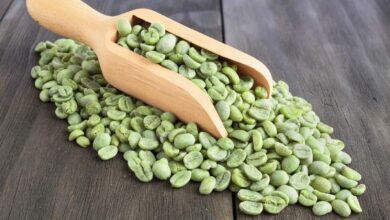How to Brew White Coffee
A. Brief Overview of White Coffee White coffee,
a lesser-known gem in the world of coffee aficionados, is gaining popularity for its unique flavor profile and brewing methods. Unlike traditional roasted coffee beans, white coffee beans are roasted at lower temperatures, preserving their natural oils and resulting in a lighter roast. This distinctive roasting process gives white coffee a milder taste with hints of nuttiness and a smoother finish compared to its darker counterparts.
B. Importance of Brewing Techniques
for the Perfect Cup Brewing white coffee is an art form that requires precision and attention to detail. Each step in the brewing process, from selecting the right beans to adjusting water temperature, plays a crucial role in extracting the delicate flavors and aromas inherent in white coffee beans. Without proper technique, even the highest quality beans can result in a lackluster brew. Thus, mastering the art of brewing white coffee is essential for enthusiasts seeking to experience its full potential.
C. Introduce the Focus Keyword
“How to Brew White Coffee” In this comprehensive guide, we will delve deep into the intricacies of brewing white coffee, providing you with step-by-step instructions and expert tips on how to brew white coffee like a seasoned barista. Whether you’re a novice eager to explore the world of specialty coffee or a seasoned coffee enthusiast looking to elevate your brewing skills, our guide on “how to brew white coffee” will equip you with the knowledge and techniques needed to unlock the perfect cup of this exquisite beverage.
Understanding White Coffee

A. What Sets White Coffee Apart from Traditional Brews?
White coffee stands out from traditional brews due to its unique roasting process. Unlike conventional coffee beans, which are roasted until dark and aromatic, white coffee beans undergo a lighter roasting process at lower temperatures. This gentle roasting preserves more of the bean’s natural flavors and compounds, resulting in a distinctly light-colored brew with a milder taste profile.
Incorporating the focused keyword “how to brew white coffee,” understanding the distinctive roasting technique is crucial for achieving the desired flavor and characteristics in the final cup. The lighter roasting process requires a different approach to brewing compared to darker roasts, emphasizing the need for precise brewing methods and equipment.
B. Varieties of White Coffee Beans
White coffee beans come in various varieties, each contributing its own nuances to the brewing process and final flavor profile. Common varieties include Arabica and Robusta beans, with each type offering distinct characteristics in terms of flavor, acidity, and caffeine content.
When exploring how to brew white coffee, selecting the right variety of beans is essential for achieving the desired taste and aroma. Arabica beans, known for their smooth and nuanced flavors, are often favored for white coffee brewing, while Robusta beans add depth and richness to the brew. Understanding the differences between these bean varieties enables coffee enthusiasts to tailor their brewing methods to suit their preferences.
C. Unique Flavor Profile and Characteristics
The lighter roasting process used in white coffee production preserves the beans’ natural flavors and compounds, resulting in a brew with a unique flavor profile and characteristics. White coffee is known for its subtle acidity, delicate sweetness, and smooth body, making it a popular choice among coffee connoisseurs seeking a milder alternative to traditional dark roasts.
Incorporating the focused keyword “how to brew white coffee,” understanding the beverage’s distinctive flavor profile is essential for crafting a satisfying cup. From adjusting brewing parameters such as water temperature and grind size to experimenting with different brewing methods, mastering the art of brewing white coffee allows enthusiasts to unlock its full potential and enjoy its nuanced flavors to the fullest.
The Essential Equipment
A. Coffee Beans:
Selecting the Right Variety When delving into the world of brewing white coffee, the journey starts with the beans. Opting for the right variety is paramount to achieving that perfect cup. Look for high-quality, lightly roasted beans specifically labeled as “white coffee.” These beans typically have a lighter color and a milder flavor compared to their darker counterparts. When purchasing, ensure freshness by checking the roast date and opt for whole beans to preserve flavor integrity. Experimenting with different varieties can add depth to your brewing experience and help you discover your preferred flavor profile.
Incorporating the keyword: To master how to brew white coffee, start by carefully selecting the right variety of coffee beans. Choose high-quality, lightly roasted beans labeled specifically as “white coffee” for the best results.
B. Grinder:
Importance of Freshness and Consistency The grinder plays a crucial role in white coffee brewing, influencing both freshness and consistency. Grinding your beans just before brewing ensures maximum flavor extraction, as freshly ground coffee retains its aromatic oils and flavors. Consistency in grind size is equally important, especially for white coffee, which tends to have a finer grind than traditional coffee. Invest in a quality burr grinder to achieve uniform particle size, enhancing the overall brewing experience and allowing for better control over extraction.
Incorporating the keyword: To ensure the best results when learning how to brew white coffee, prioritize freshness and consistency by grinding your beans just before brewing. Invest in a quality burr grinder to achieve a uniform grind size, enhancing flavor extraction and control over the brewing process.
C. Brewing Equipment:
Options and Preferences When it comes to brewing white coffee, the options for brewing equipment are diverse, catering to various preferences and techniques. Common choices include pour-over devices, French presses, AeroPresses, and espresso machines. Each method offers unique characteristics that can influence the flavor profile of your coffee. Experimentation is key to finding the brewing equipment that best suits your taste preferences and brewing style. Consider factors such as brewing time, extraction method, and ease of use when selecting the right equipment for your white coffee brewing journey.
Incorporating the keyword: As you explore how to brew white coffee, consider the diverse options and preferences available in brewing equipment. Experiment with pour-over devices, French presses, AeroPresses, and espresso machines to find the method that enhances your desired flavor profile and brewing experience.
Step-by-Step Brewing Guide

A. Grinding the beans to perfection
Grinding the beans properly is crucial for extracting the full flavor potential of white coffee. To achieve the ideal grind consistency, aim for a medium-coarse grind. This ensures optimal extraction without over-extraction, which can lead to bitterness. Adjust the grind size based on the brewing method you choose, ensuring uniformity to promote even extraction. By mastering the art of grinding, you lay the foundation for a stellar cup of white coffee.
B. Brewing methods: exploring different approaches
- Pour-over technique The pour-over technique offers a hands-on approach to brewing white coffee, allowing for precise control over the brewing process. Start by heating water to around 200°F (93°C) and placing a filter in your pour-over device. Add the medium-coarse white coffee grounds to the filter and gently pour hot water over them in a circular motion, ensuring even saturation. Allow the coffee to bloom for about 30 seconds, then continue pouring in a slow, steady stream until you reach the desired brew strength. Experiment with variables such as water-to-coffee ratio and pour speed to tailor your pour-over method to perfection.
- French press method The French press method, also known as the press pot or plunger pot, offers a simple yet effective way to brew white coffee. Begin by adding the medium-coarse coffee grounds to the French press pot. Heat water to just below boiling point, around 195°F to 205°F (90°C to 96°C). Pour the hot water over the grounds, ensuring they are fully submerged. Place the lid on the French press with the plunger pulled up and let the coffee steep for about 4 minutes. Slowly press down the plunger to separate the grounds from the brewed coffee, then pour and enjoy your freshly brewed white coffee.
- AeroPress variation The AeroPress method is a versatile brewing technique that produces a smooth and flavorful cup of white coffee. Start by placing a paper filter in the AeroPress cap and rinsing it with hot water to remove any papery taste. Add the medium-coarse coffee grounds to the AeroPress chamber, followed by hot water heated to around 175°F to 185°F (80°C to 85°C). Stir the coffee and water mixture for about 10 seconds, then attach the filter cap and let it steep for approximately 1 minute. After steeping, press down gently on the plunger to extract the brewed coffee into your cup. Experiment with different steeping times and agitation levels to find your perfect AeroPress brew.
By exploring these various brewing methods, you can uncover the nuances of how to brew white coffee, each offering a unique flavor profile and sensory experience. Whether you prefer the meticulous pour-over technique, the robustness of the French press, or the convenience of the AeroPress, mastering these methods empowers you to enjoy white coffee tailored to your preferences.
Mastering the Technique
A. Understanding the Brewing Time and Extraction Process Brewing white coffee is an art that hinges on understanding the delicate balance between time and extraction. When you embark on the journey of learning how to brew white coffee, it’s crucial to grasp the significance of brewing time. Unlike conventional coffee, white coffee demands a shorter brewing duration to prevent over-extraction, which can result in a bitter taste. Experimentation is key here, as you strive to find the sweet spot where flavors are extracted just right, resulting in a smooth and flavorful cup.
B. Fine-Tuning the Grind Size for Optimal Flavor Grind size plays a pivotal role in determining the overall taste and quality of your white coffee. As you delve into the nuances of how to brew white coffee, pay close attention to the coarseness or fineness of your coffee grounds. A finer grind size facilitates quicker extraction, while a coarser grind slows down the process, allowing for a more nuanced flavor profile. Experiment with different grind sizes and observe how they impact the taste and aroma of your brew. Remember, there’s no one-size-fits-all approach; it’s about finding the perfect grind size that suits your personal preferences and brewing method.
C. Troubleshooting Common Brewing Issues Even the most seasoned coffee enthusiasts encounter brewing hiccups from time to time. When learning how to brew white coffee, it’s essential to equip yourself with troubleshooting skills to overcome common challenges. One prevalent issue is under-extraction, which results in a weak and lackluster brew. To remedy this, consider adjusting your brewing time or grind size to ensure adequate extraction. On the flip side, over-extraction can lead to bitterness and unpleasant flavors. In such cases, shorten the brewing time and opt for a coarser grind to achieve a smoother cup. By honing your troubleshooting abilities, you’ll be better equipped to tackle any obstacles that arise on your quest to brew the perfect white coffee.
The Art of Serving

A. Presentation Tips for the Perfect Cup
- How to Brew White Coffee Presentation: The presentation of your white coffee can elevate the entire experience for yourself and your guests. Consider serving it in clear glass or ceramic cups to showcase its unique color and clarity. Pay attention to details like garnishes or latte art, adding a touch of sophistication to your brew. Mastering the art of presentation is not just about aesthetics but also about setting the stage for an enjoyable coffee experience.
B. Enhancing the Experience with Complementary Flavors
- How to Brew White Coffee with Complementary Flavors: Experimenting with complementary flavors can take your white coffee experience to the next level. Consider adding a hint of vanilla or cinnamon during the brewing process to enhance its natural sweetness. Alternatively, pair your white coffee with a light pastry or fruit to balance its delicate flavors. Understanding how to complement white coffee with other flavors can enhance its taste profile and make each sip a delightful experience.
C. Enjoying White Coffee: Solo or with Company?
- How to Brew White Coffee for Solo or Social Enjoyment: White coffee can be enjoyed in various settings, whether you prefer solitude or company. Brewing a cup for yourself can be a calming ritual, allowing you to savor the flavors and aromas at your own pace. On the other hand, sharing a freshly brewed pot with friends or family can turn into a memorable social occasion. Knowing how to brew white coffee for different settings ensures that you can enjoy its unique qualities in any situation, whether alone or surrounded by loved ones.
Conclusion
Recap of key points in brewing white coffee In this guide on “how to brew white coffee,” we’ve covered essential aspects to ensure your cup is nothing short of perfection. From selecting the finest beans to mastering brewing techniques, we’ve delved into the intricacies that make white coffee a delightful experience. Remember the importance of water quality, grind consistency, and brewing time as you embark on your brewing journey.
Encouragement to experiment and personalize the brewing process Brewing white coffee is not just a science; it’s also an art. As you apply the techniques discussed here, don’t hesitate to experiment and tailor the process to suit your preferences. Adjust grind sizes, brewing methods, and even water temperatures to discover your ideal cup. Embrace the journey of exploration and refinement as you craft your unique white coffee experience.
Closing thoughts on the allure of white coffee and its rich flavors White coffee is more than just a beverage; it’s a sensory delight that tantalizes the taste buds and invigorates the senses. Its subtle yet complex flavors offer a captivating experience for coffee enthusiasts seeking something beyond the ordinary. Whether you’re drawn to its smooth texture, floral notes, or nutty undertones, white coffee has a charm that’s hard to resist. Embrace the allure of white coffee and savor its rich flavors, knowing that with each brew, you’re creating a moment of pure indulgence.
Read More: How to Make Coffee Less Acidic: A Comprehensive Guide






